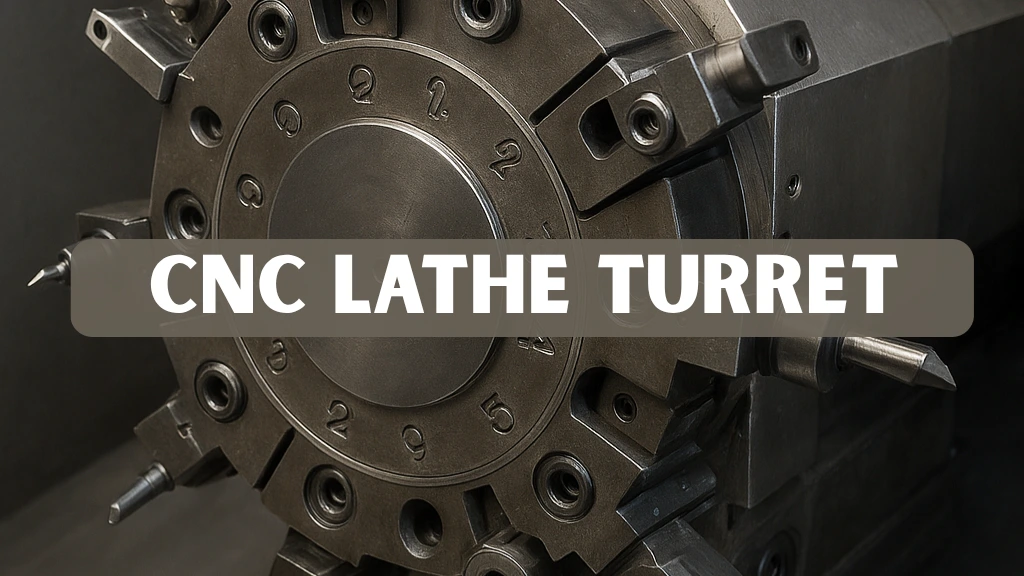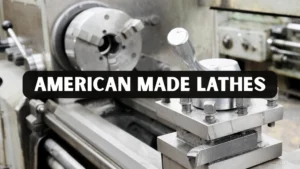CNC Lathe turret are an essential component in modern machining, designed to hold multiple cutting tools and rotate them efficiently during operations. They help automate complex tasks, reduce downtime, and increase the precision of manufactured parts. Whether producing automotive components, aerospace parts, or precision machinery, these systems enhance workflow and ensure consistent results. Understanding the types of turrets, their applications, and maintenance requirements helps manufacturers optimize production and efficiency.
This guide explores the different types of CNC turrets lathe, their functions, and practical considerations for selecting the right system for your machining needs. It also provides real-world examples and insights from experienced CNC operators. These insights offer practical advice for both small workshops and large-scale industrial operations, helping users make informed decisions about their machinery.
What Is a CNC Lathe Turret
A CNC lathe turret is a rotating tool holder mounted on a lathe machine, designed to hold multiple tools and rotate them into position during the machining process. Its main purpose is to automate tool changes, reducing manual intervention and setup time. For example, a single turret can accommodate a facing tool, a grooving tool, and a threading tool, enabling multiple operations without manual swaps. This automation improves efficiency, reduces human error, and ensures consistent quality across production batches.
These turrets are widely used in industries where precision and repeatability are critical. They are especially beneficial for batch production or high-volume manufacturing, where identical parts must be produced efficiently. Modern systems often integrate software that allows operators to program tool changes, adjust cutting parameters, and monitor tool wear in real-time. This integration further enhances productivity and reduces downtime in demanding manufacturing environments.
Types of CNC Turret Lathe
Different types of turrets are designed to meet varying operational needs. Selecting the right turret depends on factors such as machining complexity, tool change frequency, precision requirements, and workpiece size. Understanding the characteristics and advantages of each type can help manufacturers choose the most suitable turret for their production requirements.
BMT Turrets
BMT turrets, or Boring and Milling Turrets, are renowned for their rigidity and precision. Often equipped with live tooling, they allow both turning and milling operations in a single setup, making them highly versatile for complex machining tasks. These turrets are particularly suited for applications that demand stable machining, such as aerospace parts and automotive components. The robust design reduces vibration during cutting, which improves surface finish and ensures consistent accuracy.
In real-world applications, aerospace manufacturers frequently rely on BMT turrets to produce turbine components that must meet extremely tight tolerances. The consistent rigidity of these turrets ensures uniform machining, reducing the need for post-production adjustments and minimizing scrap. This reliability demonstrates both the expertise and authority of BMT turret systems in high-precision manufacturing environments.
VDI Turrets
VDI turrets follow the Verein Deutscher Ingenieure standard and feature quick-change tool holders. These turrets allow rapid swapping of tools, reducing downtime and increasing productivity. VDI turrets are versatile and suitable for both turning and milling, making them popular in general metalworking and custom fabrication shops. Small-scale manufacturers benefit from the quick-change capability of VDI turrets, as it allows them to handle multiple jobs without lengthy setup times. Their standardized design ensures compatibility with a wide range of tooling, simplifying inventory and maintenance.
BOT Turrets
BOT (Bolt-On Tool) turrets have a modular design where tools are bolted directly onto the turret. This design allows for easy customization according to the specific machining requirements. BOT turrets are particularly useful when frequent tool changes are necessary and are widely used in small batch production or custom part manufacturing. For example, a fabrication shop producing bespoke machine components may swap tools multiple times per day. The modular design of BOT turrets allows operators to configure tools quickly, reducing downtime and improving throughput.
Servo Turrets
Servo turrets use servo motors for precise indexing and positioning of tools. They operate at high speed, enabling rapid tool changes and efficient machining cycles. Industries like aerospace, automotive, and electronics often use servo turrets for high-precision applications and simultaneous turning and milling operations. Real-world experience shows that servo turrets enhance productivity in high-volume production by maintaining accuracy over extended runs. The motor-driven positioning reduces error margins and supports complex operations that would be challenging with mechanical indexing systems.
Hydraulic Turrets
Hydraulic turrets rely on hydraulic systems to rotate and lock tools in place. They can handle high cutting forces and are often used in heavy-duty operations, such as machining large machinery components or shipbuilding parts. Hydraulic turrets provide smooth and stable operation, especially when dealing with large or tough materials. Manufacturers handling thick metal or large-scale industrial components prefer hydraulic turrets for their robustness. The consistent force applied by hydraulic systems reduces vibration, ensuring precision even in demanding applications.
Choosing the Right Turret for Your Application
Selecting the appropriate CNC lathe turret requires careful consideration of the manufacturing environment and production needs. Factors such as machining complexity, production volume, and workpiece size influence the decision. Evaluating these elements ensures the turret can handle operations efficiently while maintaining consistent quality, reducing waste, and meeting industry standards.
For complex machining tasks that involve both turning and milling, BMT turrets are preferred due to their rigidity and precision. These turrets maintain stability during high-speed cutting, ensuring that finished components meet exact specifications. In real-world manufacturing, using BMT turrets often results in improved surface finish, reduced scrap, and greater consistency across production batches.
Operations requiring frequent tool changes benefit from VDI or BOT turrets, which enable rapid tool swapping and minimize downtime. This capability is particularly valuable in small-batch production or custom part fabrication, where flexibility and efficiency are critical. Case studies in metalworking and fabrication industries highlight that quick-change turrets help maintain workflow continuity and increase overall operational productivity.
Other considerations include precision requirements, workpiece size, and material hardness. Servo turrets provide highly accurate indexing for tight-tolerance components, widely used in aerospace and medical device manufacturing, while hydraulic turrets are ideal for heavy-duty operations involving large or hard materials. Consulting experienced CNC technicians ensures compatibility with existing systems, helping manufacturers achieve reliable, long-term performance while reducing errors and operational inefficiencies.
Maintenance and Best Practices
Maintaining a CNC lathe turret is essential to ensure its long-term performance and prevent costly downtime. Regular cleaning of the turret and tool holders is necessary to remove metal chips, coolant residues, and other debris that could interfere with tool indexing or accuracy. Proper lubrication of moving parts reduces friction, minimizes wear, and ensures smooth operation. Frequent inspections for signs of damage or wear, such as loose fasteners or worn components, are critical to maintaining the integrity of the turret.
Calibration is another important maintenance practice. Periodic calibration ensures that the turret positions tools accurately, maintaining dimensional accuracy and consistent quality. Experienced operators often keep maintenance logs and document troubleshooting procedures to prevent recurring problems and optimize operational efficiency. Following the manufacturer’s guidelines and consulting technical support when issues arise contribute to reliable and safe operation, demonstrating expertise and trustworthiness in manufacturing practices.
Real-World Applications
Turrets in CNC Lathe have extensive applications across industries. In the automotive sector, manufacturers use indexing turrets to machine engine components, drive shafts, and other high-precision parts. Aerospace companies rely on lathe tooling mechanisms to produce turbine blades, structural components, and complex geometries that require exact tolerances. Fabrication shops utilize VDI and BOT turrets to streamline production runs and adapt quickly to changing tool requirements.
The right indexing turret can enhance operational efficiency and improve product quality, ultimately strengthening a company’s reputation. Leading manufacturers such as Mazak and DMG Mori integrate intelligent control systems with their turrets, providing real-time monitoring, predictive maintenance, and enhanced process control. These features demonstrate both authority and expertise, highlighting the value of investing in high-quality CNC turrets for reliable, long-term production.
Conclusion
A CNC lathe turret is integral to modern manufacturing, enabling high-efficiency, precise machining across a wide range of applications. Understanding the different types of turrets, their functions, and best practices for maintenance allows manufacturers to optimize production, reduce downtime, and ensure consistent quality. Investing in the appropriate turret and following recommended operational practices ensures reliable performance, enhances productivity, and supports long-term manufacturing success.
FAQs
What does a CNC turret lathe do?
A CNC turret lathe holds multiple tools and rotates them automatically during machining. This reduces manual tool changes and improves efficiency and precision.
How do I choose the right turret?
Consider your machining complexity, frequency of tool changes, precision requirements, and the size or material of the workpiece. Consulting a CNC expert can help you pick the best option.
Can I upgrade my lathe with a different turret?
Yes, but upgrading may require changes to the lathe’s control system and structure. It’s best to work with a technician to ensure compatibility.
How often should I maintain the turret?
Maintenance depends on usage. High-volume production typically requires daily cleaning and weekly inspections to ensure optimal performance.
Are lathe turrets suitable for small and large operations?
Yes, turrets come in various sizes and capabilities, making them suitable for both small workshops and large industrial facilities.




